This is the second of two articles illustrating my wanderings over a few months in and around Brick Lane in London. The first focused on the street art; this focuses on the markets in the street and those which have occupied the site of the now-closed Truman Brewery.
Having taken the train to London Bridge and walked from Sho
Traditional
The markets in and around Brick Lane have different characters depending on their location. Around the street, more traditional market stalls continue to sell new clothing, fabrics and fruit and vegetables. At the north end of the road, the stalls seem to be set up by weekend traders selling stuff such as army surplus clothing, used cameras and odds and ends.
As an aside, in England army surplus clothing and equipment used to be popular buys for those wanting to work or camp in the countryside or for a more ‘edgy’ fashion look. The sector has suffered a decline in popularity due, I suppose, in part to the increased number of outdoor clothing and camping shops and the more military styles offered by the mainstream clothing shops.
Camera mishmash
The camera stall had a mishmash of cheaper, lower quality cameras, nothing like the quality of those at the recent Photographica fair in London last month. Some specialised shops have opened at that end, part I assume of the gentrification of the area, but, generally, the street is scruffier than at the Whitechapel Road end. I nipped into a branch of the coffee and chocolate shop Dark Sugars, with their chocolates beautifully displayed in wooden bowls, to try and capture the flavour – so to speak – of the street.
Further down the street. a chess player had set up his table but whether he was making – or taking – money from the punters I couldn’t tell. Having played around with the cropping I decided to convert the picture to black and white as the red van in the background dominated in the colour version.
Truman Brewery
Further toward Whitechapel Road, past the main railway lines out of Liverpool Street Station, are the buildings previously occupied by the Truman brewery which was a major business in the area for many years. A search on Wikipedia revealed the following.
The site’s first associations with brewing can be traced back to 1666 when a Joseph Truman is recorded as joining William Bucknall’s Brewhouse in Brick Lane. Part of the site was located on Black Eagle Street, hence the Black Eagle Brewery’s name. The Truman name came from Joseph Truman who took control of the brewery in the 1680s. By 1748 the Black Eagle Brewery was the third largest brewery in London, and likely the world, with 40,000 barrels produced annually.
In 1971 Truman’s became the centre of a bidding war between Grand Metropolitan and Watney Mann. Eventually, Grand Metropolitan won and then immediately turned its attention to Watney Mann. Upon taking over Watney Mann, Grand Metropolitan then merged it with Truman’s.
Grand Metropolitan made many changes to the company, including changing the name to Truman, creating a new brand, switching to kegs and changing the beer – all decisions that proved to the detriment of the company.
Personal note
Here I interject a personal note. At this time the quality of beer generally available in England was pretty poor and nothing like it is now, much of it being produced by a few large brewers with their gassy keg beer being carbonated and pushed from the keg in the cellar up to the serving tap in the bar.
The Campaign for Real Ale promoted ‘real ale’ – being hand pulled from the barrel to the tap without gas – and smaller brewers. Keg beers such as Watney’s Red Barrel were derided and badges appeared labelling Ind Coope’s Double Diamond as DD is K9P (it wasn’t, don’t ask). I used to share a house in North West England with the local CAMRA representative and sometimes accompanied him on his beer inspection trips.
We once made a day trip up a remote valley in Lancashire to a small pub with nothing on show on the bar. The landlady went out the back and poured the beer straight from the barrels. It was excellent, but I don’t remember who brewed it. With that diversion, I have to leave the peaceful beautiful Lancashire countryside and return to the noise and grime of East London.
These mistakes were realised in the 1980s when casks were brought back along with the traditional Truman’s eagle, but the damage had been done and the brewery was shut in 1989. The former buildings, warehouses and yards were redeveloped by The Zeloof Partnership as the “Old Truman Brewery” and now house over 250 businesses, ranging from cultural venues to art galleries, restaurants, and retail shops. The Director’s House and former Brew House are
The old brewery buildings now house a collection of offices, shops and markets which tend to be more upmarket than those at the northern end. A major feature is the number of secondhand clothing shops, which are now termed vintage. I suppose clothing sells better marketed as ‘vintage’ rather than ‘second hand’. It’s become very popular with millennials as a reaction to the throwaway fashions of the high street and as always their desire for a bargain. Some markets open only at the weekend with stalls that feature artisan craft goods and ethnic street food.
Victory dance
Taking a break in a café, I noticed two girls walking arm in arm in high spirits ‘on a mission’. They disappeared into one of the vintage markets. Hanging around on the street I happened to see them emerge and begin what I thought of as an exuberant, protracted ‘victory dance’ outside the market. I have no idea why.
As I wrote in the first article, Brick Lane has many facets and communities living and working in and around it. These two articles are only snapshots. If you are visiting London and want to photograph street art, markets and some of life’s more colourful characters – and drink some good coffee – the street is one for your list.

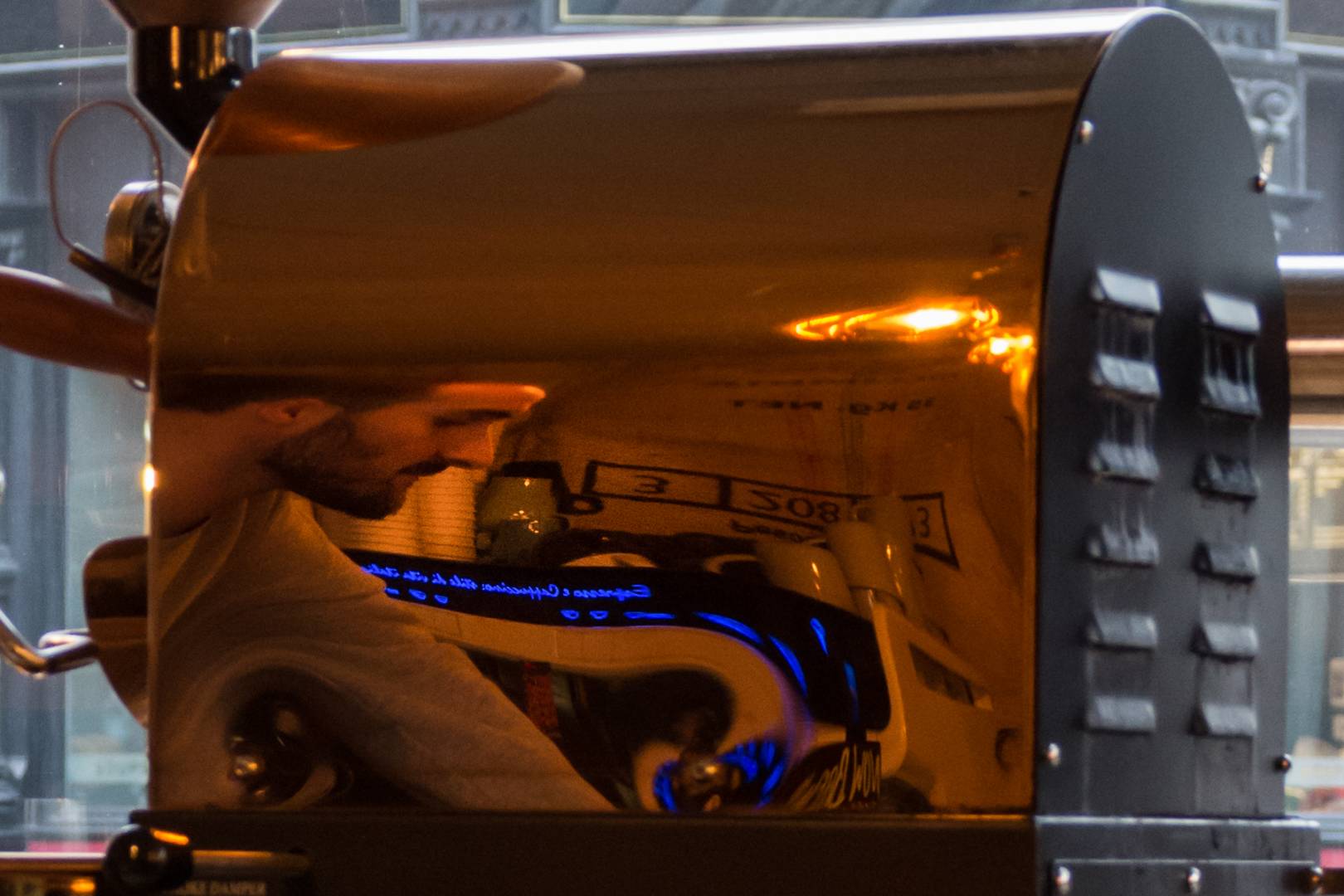
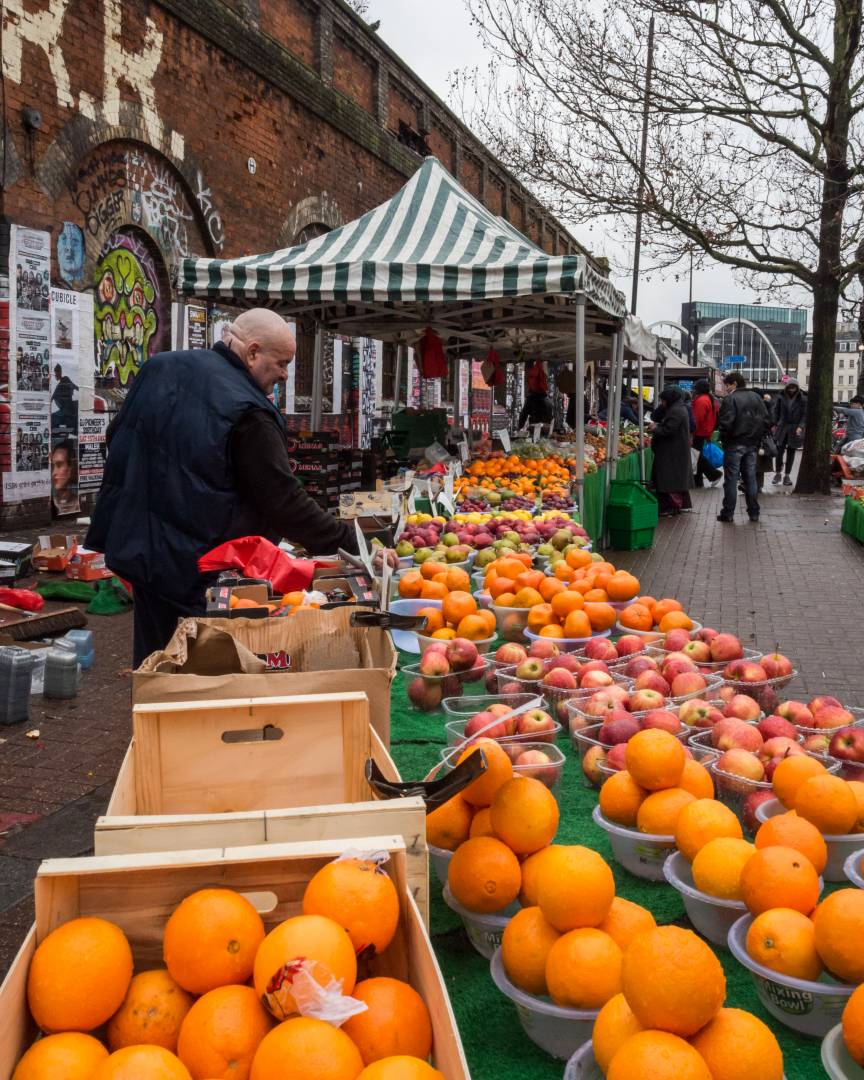
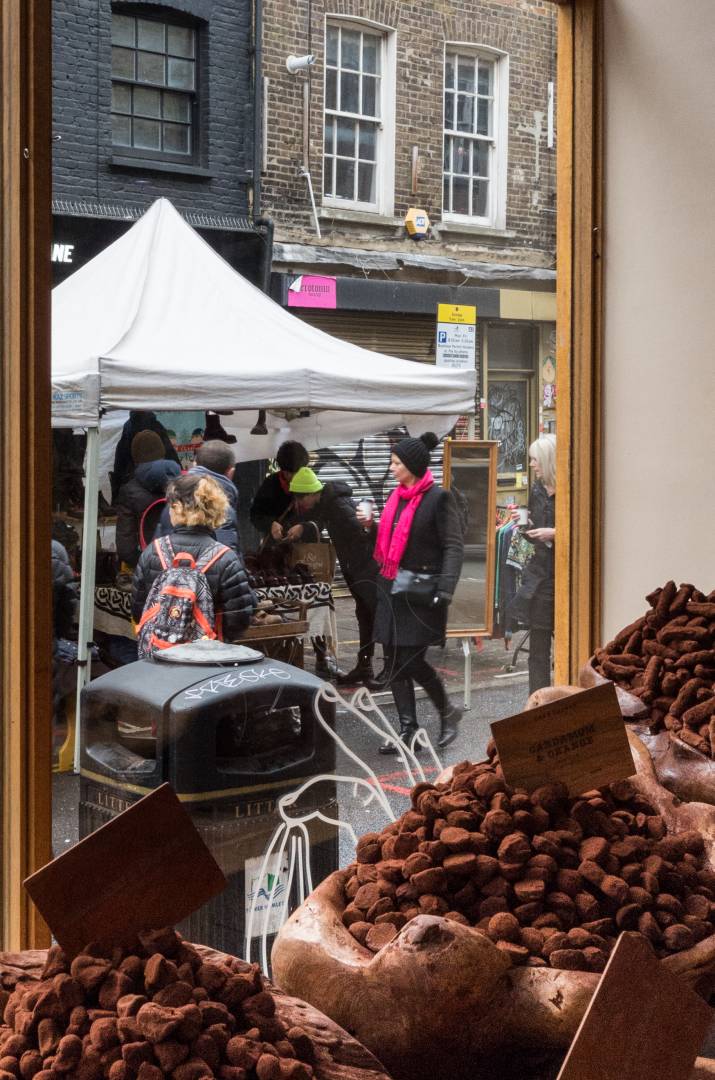
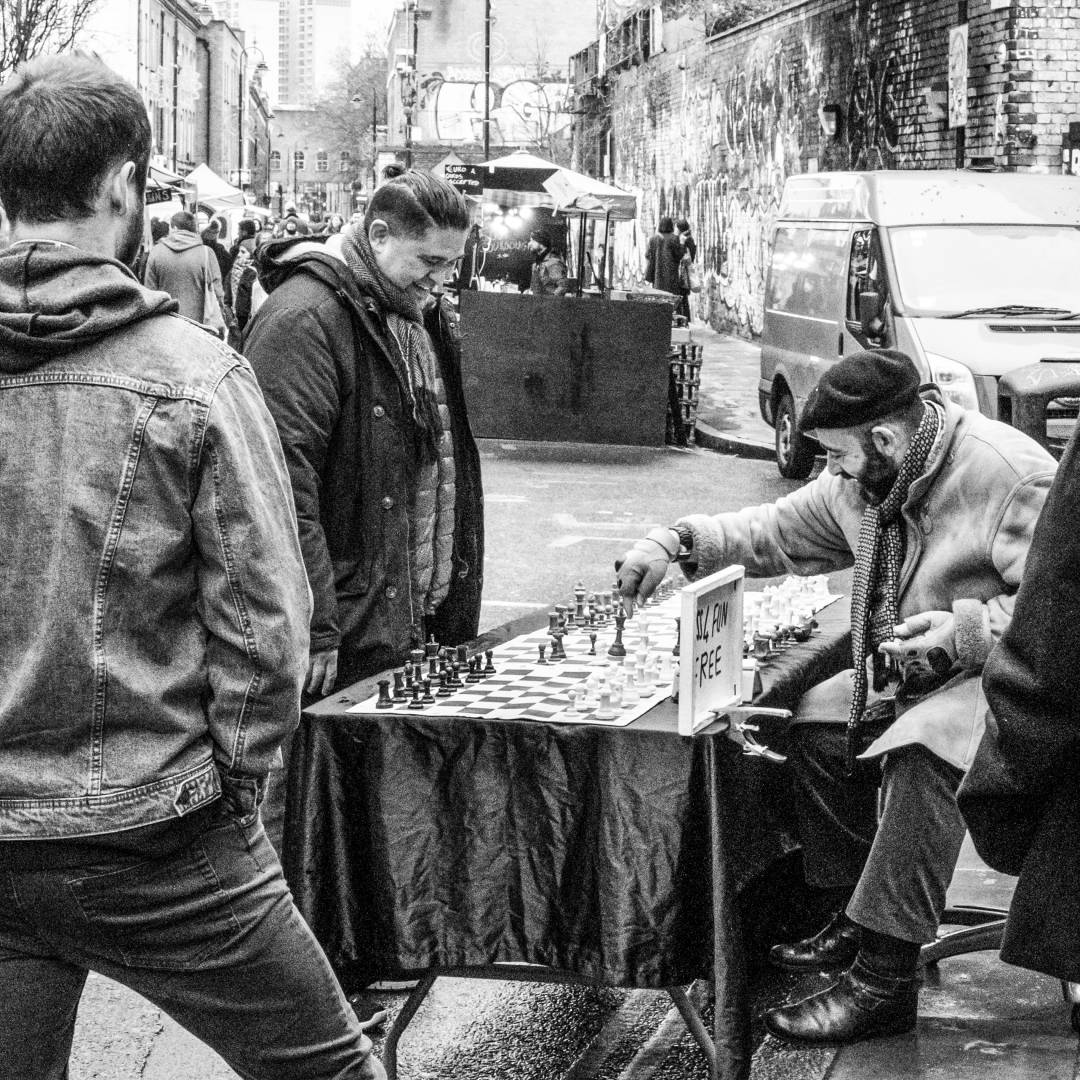
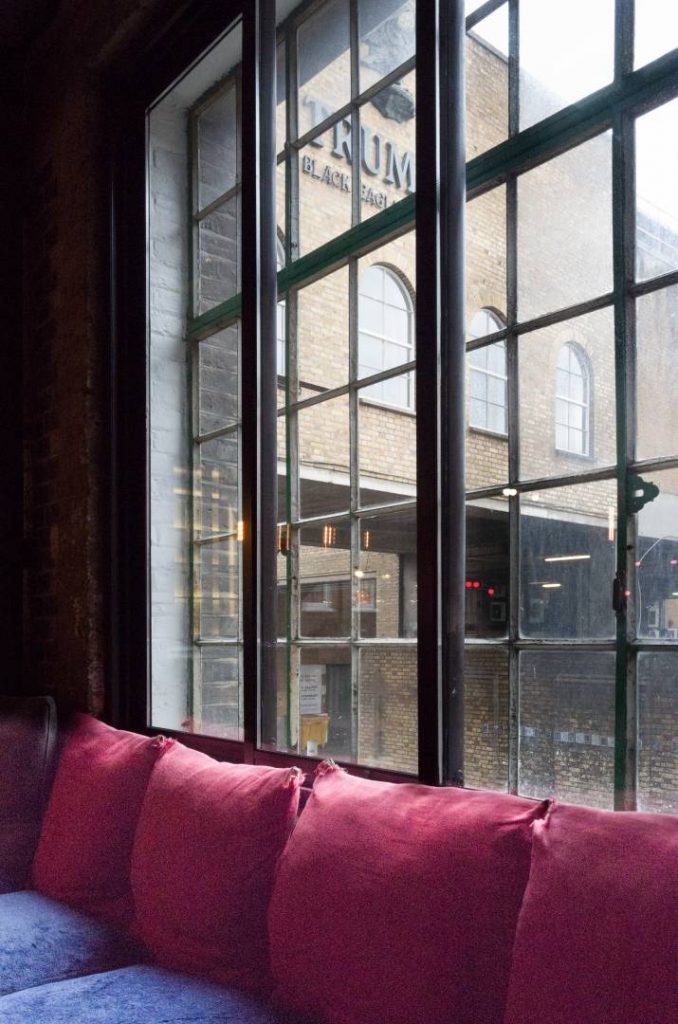
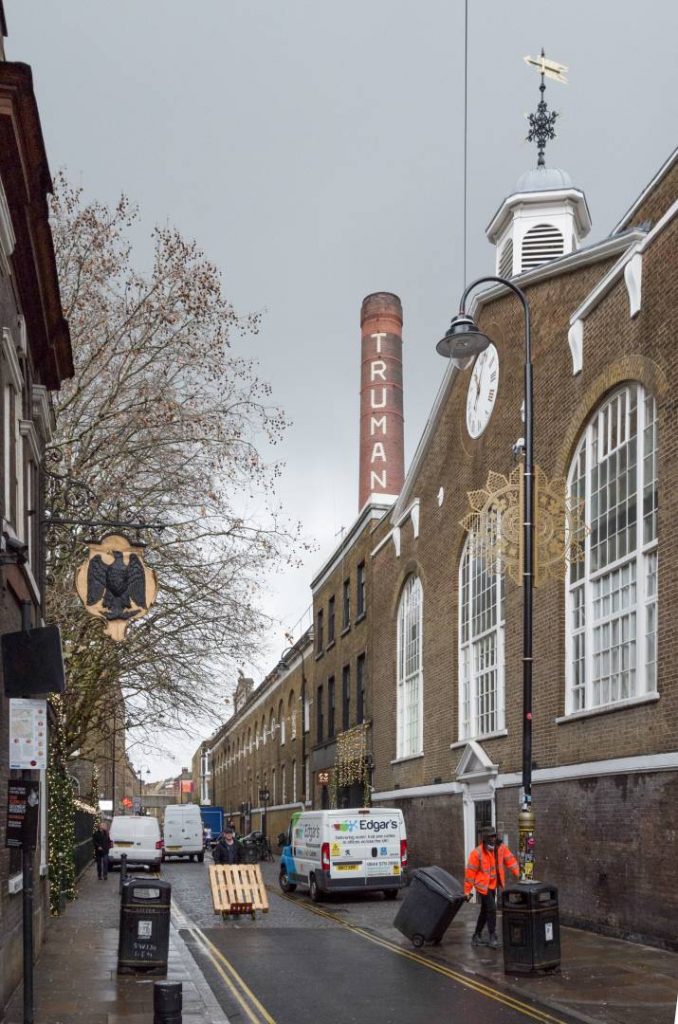
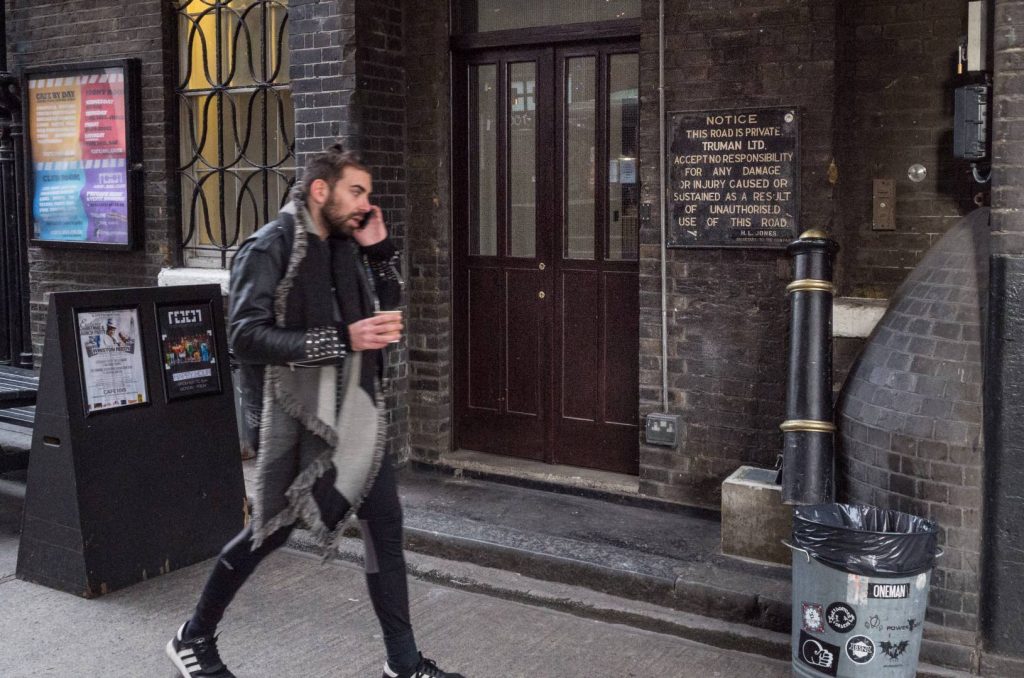
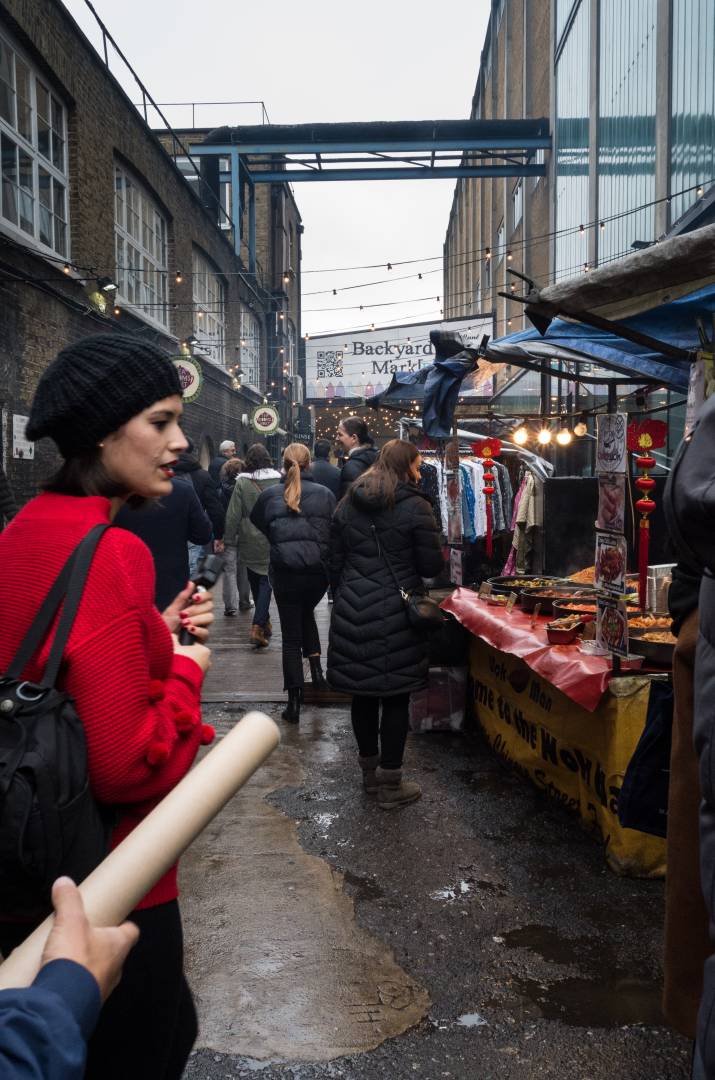
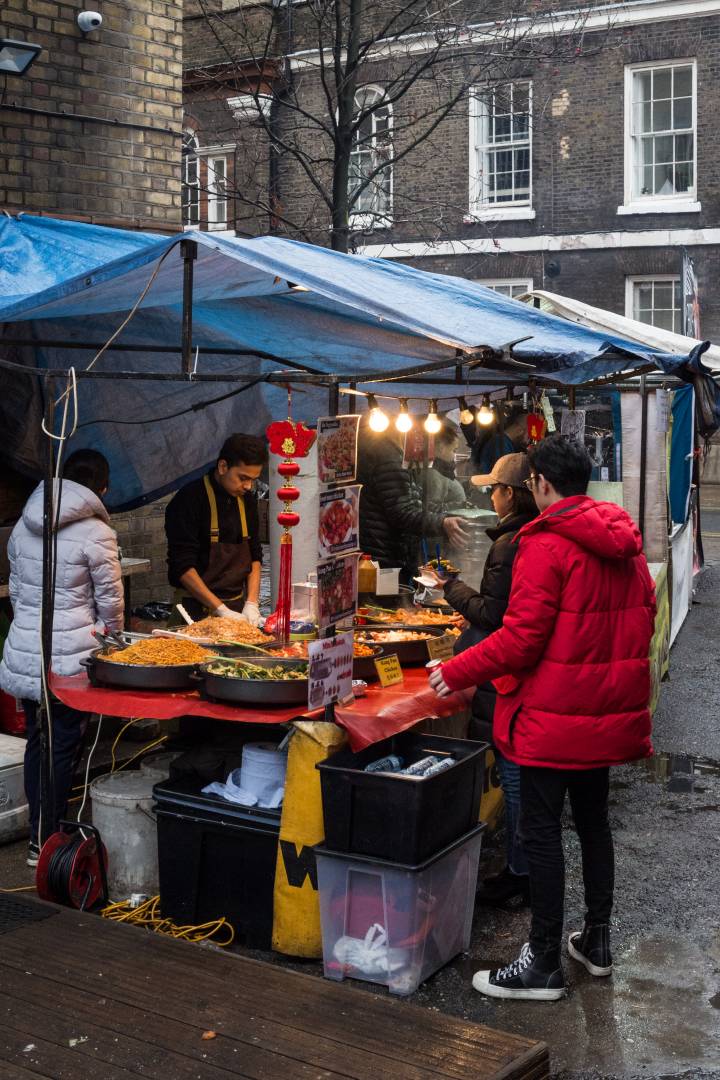
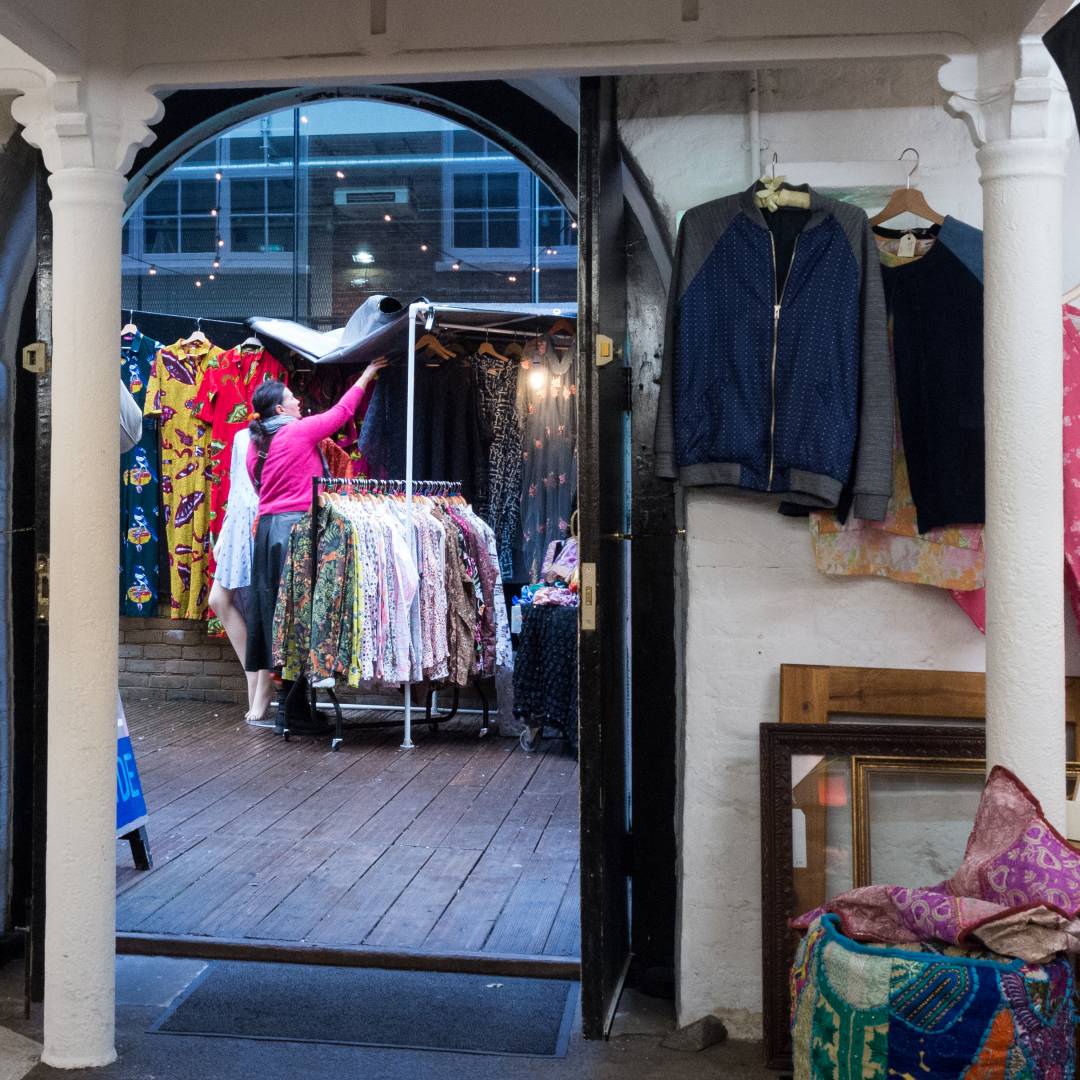
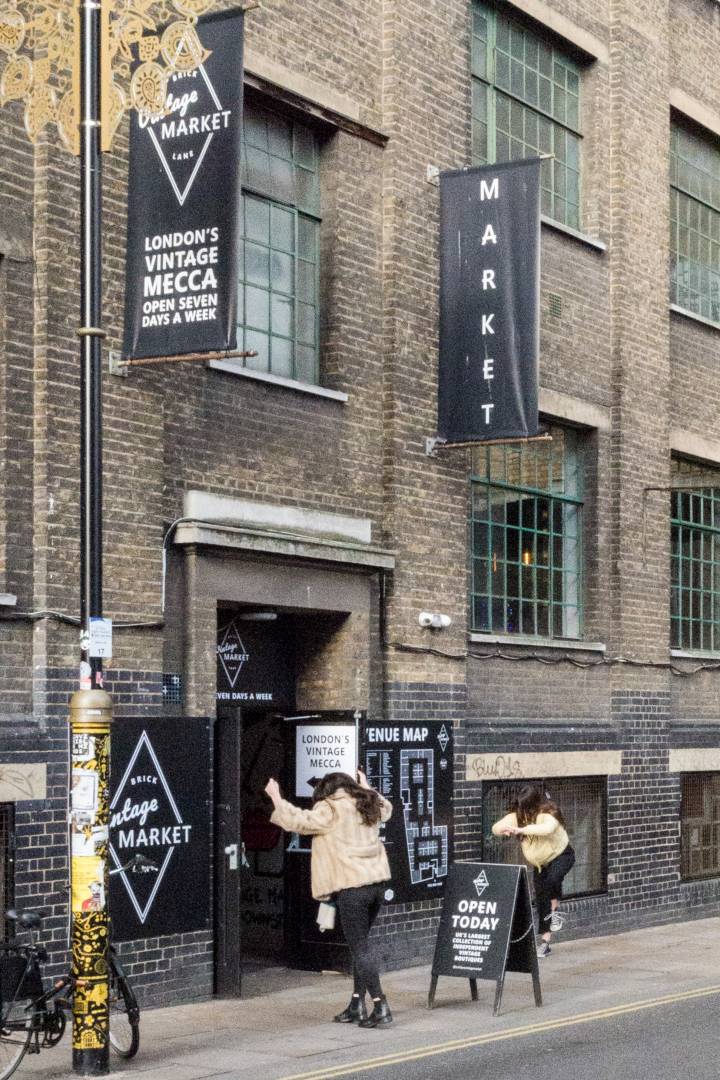
Hi Kevin, I really enjoyed your informative and interesting article – photos and text. You do showcase the great rendering of the camera which is still a relevant tool today. I remember well the negativity about the X family but people focus even today on stupid specs instead of rendering and haptics.
Thanks Brian, I agree. I don’t miss them not having the latest animal eye auto focus to capture the fox running straight at me.
In the twilight.
Thanks Kevin for sharing. You make the x-vario shine. I particularly like the B&W image of the chess players. Great capture. The x vario is an amazing camera with that special leica look (just wish prices would drop on the used market).
Thanks Jean.
Lovely story telling! Back in my yoof, and long before I move to USA, I remember being at school in Bath at the time of the “Red Revolution” and the cries from the counter-revolution led by by the “Beardies and corduroy jacket brigade”. As a not quite legal age drinker the Red Revolution was dispiriting, but beers like Wadworth’s 6X showed what we would be missing if Watneys had its way. A year or so later I had a summer job working at the Hole-in-the-Wall in Bristol which had a proper cellar, proper beer engines and a proper 80 year old cellar man called Burt. Burt taught me about tapping barrels, pegging them to let them breathe and “splining” them through a pipe to get the beer to the beer engine and the bar above. I also learned how to cold wet blanket wrap barrels before a thunderstorm. It’s when the lightbulb flickered and I realized beer (real beer) was a living thing. Thanks for bringing back those memories!
Thanks. Interestingly CAMRA is trying to attract younger members as its membership ages. Near where I live there are three specialist micro-pubs that only sell craft beers which can be drunk in the shop.
What about a Lenny Kravitz Snake-oil ale? That should bring in the punters.
My comment was clicked as a reply to Dunk Sargent and should have appeared under his full comment.
Excellent photos and I could really imagine the fragrance of the oranges. The X Vario camera was so unfairly criticised and derided when first released … especially by some ‘Luddite’ Leica Forum members who’d never used the camera and who failed to understand its design/specification … and who thought they knew better and could design a lens better than Peter Karbe. Those naysaying Leica ‘experts’ contributed to the camera’s less than target sales … and they still criticise … whilst at the same time praising non-Leica models. Unfortunately, the Leica Forum moderators did little to stop their unjustified comments. Furthermore, the Leica XV’s marketing campaign did not help matters … the chosen ‘Mini M’ moniker likely alienated and upset many diehard Leica enthusiasts. However, the X Vario is now a sought after classic which has ‘won over’ significant numbers of Leica enthusiasts. Name another APS-C compact zoom which can produce exemplary images at any aperture through its zoom range. Peter Karbe and his team designed one of the finest ever APS-C zoom lenses. Fast forward 6 years after the XV launch and the Leica Forum now hosts thousands of X Vario images over 138 forum pages … proving the camera’s versatility and worth. But the X Vario’s strengths, could, with a little less unfair criticism, and better Leica marketing, have been realised from launch.
Agreed, Dunk. I regret selling mine and have often been tempted to buy another. As you say, though, they are sought after and the price remains stubbornly high as a result.
Red Dot had a couple when I looked this morning, nicely priced too.
I couldn’t agree more for both colour and B&W.
Thanks Dunk and I agree completely.
Never sell an X Vario 😊
Thanks Kevin — Lovely pics — and a great neighborhood not yet entirely spoiled by e-commerce or luxury mono-stores. There is a depth and resolution of colour from the X-Vario that I have yet to emulate in the CL with the 18-55; I sold mine some time ago, but still regret not hanging on to it.
Thanks Tony.
My apologies to readers and particularly to Kevin Armstrong for publishing this under my byline instead of his. Sorry to mislead you all, but I’ve corrected it now.
This is an easy mistake to make because the system has me as the default author. So I have to remember to change authors when necessary. Usually I get it right, but not this time.
Sometimes I hate technology for this stuff, I feel your pain.
Thanks Mike for correcting it quickly.
Hole damn spell check
It is always nice to see people repurpose buildings rather than destroy them. Somehow it keeps the fabric in the neighborhood rather gapping whole where a tooth was. Your chess player reminds me of a Master Jude Acers in New Orleans on Decatur street who would set up and play $5.00 a game or $200.00 for four hour lesson has many titles for playing simultaneous games per Guinness, and like the dancers, people enjoying themselves. I used to drive my parents to New Orleans they would stay at my sisters in Slidell, across the river, for the Winter.
Hi Mike,
Not an area of London I have ventured into yet, but clearly one I need to visit at some point. However your diversion into CAMRA and Lancashire, has me thinking real real beer 🍺 and Clitheroe came to mind. No idea why.
Also it’s always nice to capture something random so the two dancing ladies is like lots of things, a testament to the eccentricities of being a human. 😂
Dave
Redirect this to Kevin, sorry. And thanks to Mike for point out the change to the article.
“..as the red van in the background dominated in the colour version”.
For those of you watching in black and white, the red is the one behind the blue..